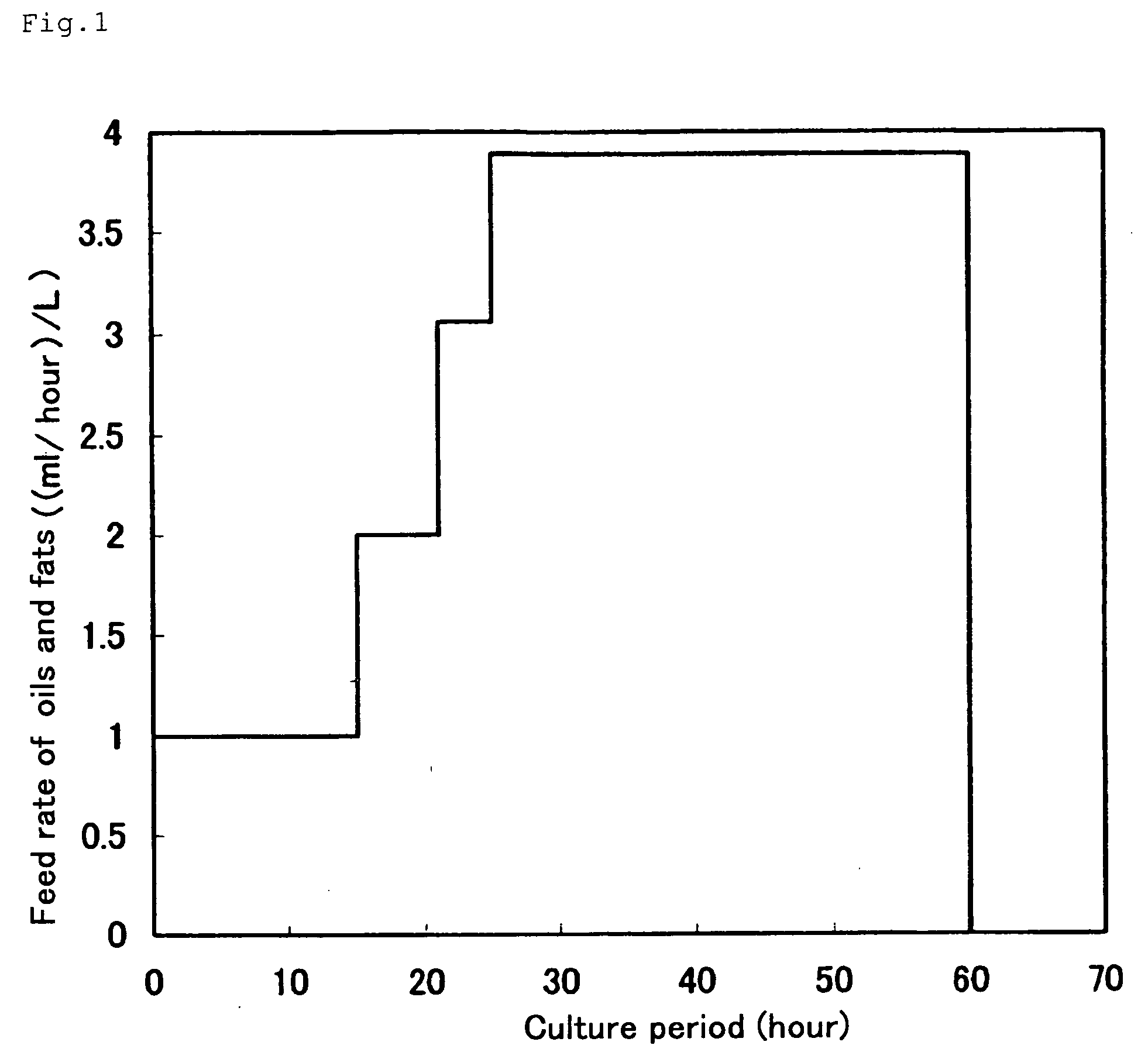Process for producing copolyester
a technology of copolyester and copolyester, which is applied in the field of copolyester production, can solve the problems of limited practical application range, inability to improve flexibility to such an extent, and impede production cost, and achieve low cost, high productivity, and the effect of ensuring productivity
- Summary
- Abstract
- Description
- Claims
- Application Information
AI Technical Summary
Benefits of technology
Problems solved by technology
Method used
Image
Examples
example 4
[0071] The strain was cultured in the same medium and condition as in Example 1 and Comparative Example 1 except that mixed oils were used, which comprise palm kernel olein oil and coconut oil in 1:1 (v / v), palm kernel olein oil and peanut oil in 1:1 (v / v), palm kernel olein oil and soybean oil in 1:1 (v / v) and palm kernel olein oil and corn oil in 1:1 (v / v), and the results shown in Table 4 were obtained. The results of the culture at 60-hour are compared in Table 4.
TABLE 4Productivity of3HHP(3HB-co-3HH)contentMixed oils(g / L)(mol %)Palm kernel olein oil1:1 (v / v)688.5and coconut oilPalm kernel olein oil1:1 (v / v)656.2and peanut oilPalm kernel olein oil1:1 (v / v)725.2and soybean oilPalm kernel olein oil1:1 (v / v)674.5and corn oil
[0072] As a result of increasing the lauric acid content in substrate oils and fats by using the mixed oils containing a lauric oil, P(3HB-co-3HH) having the 3HH content of not less than 4 mol % were produced even when corn oil and soybean oil were used, which...
example 5
[0074] The strain was cultured in the same medium and condition as in Example 1 and Comparative Example 1 except that 4 species of mixed oils in which the mixing ratio of palm kernel olein oil and soybean oil was changed were used as a substrate, that is, mixed oil A (palm kernel olein oil / soybean oil=75 / 25 (v / v)), mixed oil B (palm kernel olein oil / soybean oil=50 / 50(v / v)), mixed oil C (palm kernel olein oil / soybean oil=25 / 75 (v / v)) and mixed oil D (palm kernel olein oil / soybean oil=20 / 80 (v / v)). The results shown in Table 5 were obtained. The results of the culture at 60-hour are compared in Table 5.
Lauricacid con-Productivitytent in theof P(3HB-3HHused oilco-3HH)content(weightMixed Oils(g / L)(mol %)%)Mixed oil A (Palm kernel olein oil / 686.130.8Soy bean oil = 75 / 25 (v / v))Mixed oil B (Palm kernel olein oil / 725.220.5Soybean oil = 50 / 50 (v / v))Mixed oil C (Palm kernel olein oil / 704.710.3Soybean oil = 25 / 75 (v / v))Mixed oil D (Palm kernel olein oil / 723.2 8.2Soybean oil = 20 / 80 (v / v))
[00...
PUM
| Property | Measurement | Unit |
|---|---|---|
| temperatures | aaaaa | aaaaa |
| temperatures | aaaaa | aaaaa |
| temperature | aaaaa | aaaaa |
Abstract
Description
Claims
Application Information
 Login to View More
Login to View More - R&D
- Intellectual Property
- Life Sciences
- Materials
- Tech Scout
- Unparalleled Data Quality
- Higher Quality Content
- 60% Fewer Hallucinations
Browse by: Latest US Patents, China's latest patents, Technical Efficacy Thesaurus, Application Domain, Technology Topic, Popular Technical Reports.
© 2025 PatSnap. All rights reserved.Legal|Privacy policy|Modern Slavery Act Transparency Statement|Sitemap|About US| Contact US: help@patsnap.com

